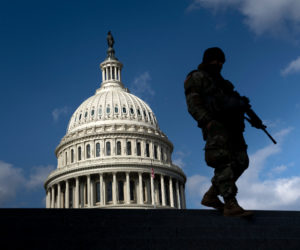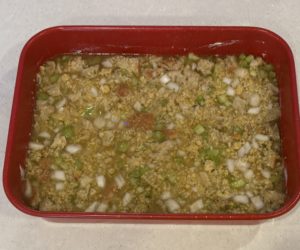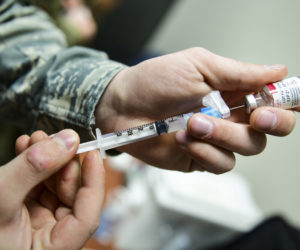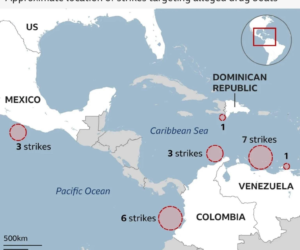So who are the political “feel” good candidates and in what order?
Gallop has the answer. And it’s good news for Barack Obama but in a general election not-so-good for Senator Hillary Clinton.
Using a “feeling thermometer” rating scale, Gallup recently tested the public images of several of the Republican and Democratic candidates running for president in their respective parties. Of these, only one — Barack Obama — stirs up warm feelings in a majority of Americans. However, Rudy Giuliani, Hillary Clinton, John Edwards, and John McCain are all close to Obama in favorability. Clinton’s image is the most polarized of this group: nearly as many Americans say she leaves them cold as say they feel warmly toward her.
It gives us this graph:

Despite wide variation in the visibility of the various candidates, their mean thermometer ratings — based only on respondents who could rate each candidate — fall in a narrow range between 45.7 degrees and 55.6 degrees, including five who earn mean scores above the 50-degree mark. None are wildly popular among the public at large, and none are terribly unpopular.
But there is MUCH MORE — and that’s where Ms. Clinton’s vulnerability seems to emerge.
Gallup also rates who the public heard of and hasn’t. Obama is at the top end and GOPer Rep. Sam Brownback is at the bottom of those listed.
But Gallup notes that in getting a nomination these national rankings don’t outline the whole story. What’s important is how candidates are perceived within THEIR OWN party — and on that score Ms. Clinton is in good shape:
On this basis, Hillary Clinton springs to the top of both packs of candidates. Nationally, 82% of Democrats rate her warmly, which is higher than the other most positively rated Democrats: Barack Obama with 72% and John Edwards with 68%. Biden and Richardson receive much lower warm ratings from members of their own party, mostly because a large segment of Democrats says they have never heard of either candidate.
Another measure? Who would voters most like to dine with?
The results underscore Clinton’s strength within the Democratic Party, and the fact that the Republicans lack a similarly dominant character on their side. Given a choice of Clinton, Obama, Giuliani, Thompson, McCain, Edwards, and Romney, the slight plurality of Americans — 26% — say they would most like to dine with Clinton. She edges out Obama with 20%, but is well ahead of Giuliani and other Republicans.
Naturally, Democrats are most likely to name a Democratic candidate for their dining partner, and Republicans are most likely to name a Republican. However, Clinton dominates among Democrats with 47% choosing her, compared with 31% choosing Obama and 12% choosing Edwards. Republicans’ selection is much more dispersed with Giuliani only slightly favored over Thompson (27% vs. 22%).
But the conclusion on Clinton will not be a welcome one to the Clinton camp and will give Obama and Edwards more material for speeches about needing a candidate with low negatives:
While Hillary Clinton’s warm ratings are higher than those of Edwards and McCain, her relatively high cold ratings suppress her overall mean score, pushing it below the 50-degree mark.
All this suggests that Obama, Edwards, Giuliani, and McCain are slightly better positioned than Clinton to win the fall election and to earn popular support from Americans should they be elected president. Thompson technically falls into this auspicious group given his warm mean thermometer score; however, he is not widely known enough to project these figures onto the public.
Clinton’s strength is within her own party. Among Democrats she is the most well-liked candidate, and the one most Democrats would prefer to meet personally over dinner.
The poll is not devastating news for Hillary Clinton but it underscores her problems, using poll methodology to do so.
Expect Clinton’s foes — within and outside her party — to look at this poll material and adjust their campaign’s strategy and tactics accordingly. Most likely Republicans and Democrats will seek to drive up her negatives and perhaps even try to bait her into getting into situations that show her in the worst possible light. On her end, Clinton will have to continue to make the case that she can gain wider support than she has — and have it be increasingly evident in poll numbers as primary season unfolds.
FOOTNOTE: I saw a version of this “feeling thermometer” emerge while visiting Connecticut the past few days. An elderly relative who has voted for Bush saw Obama on TV and said she liked him: “He seems like a nice person.” Then another relative, who is an independent, said, “That’s the problem with American politics. A lot of people last time voted for George Bush because they felt he looked like such a nice guy.”
Joe Gandelman is a former fulltime journalist who freelanced in India, Spain, Bangladesh and Cypress writing for publications such as the Christian Science Monitor and Newsweek. He also did radio reports from Madrid for NPR’s All Things Considered. He has worked on two U.S. newspapers and quit the news biz in 1990 to go into entertainment. He also has written for The Week and several online publications, did a column for Cagle Cartoons Syndicate and has appeared on CNN.
















